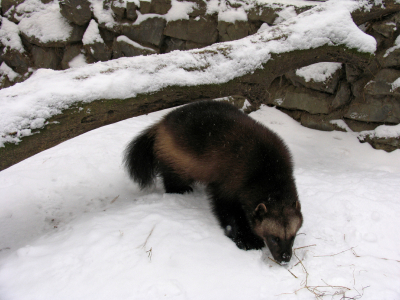
Citing climate change, government seeks to classify the wolverine as a threatened species.
Citing climate change as the “primary threat” to the North American Wolverines’ continued existence, the Fish and Wildlife Service (FWS) recently proposed a rule to recognize wolverines as a threatened species under the Endangered Species Act. The classification would add wolverines to the List of Endangered and Threatened Wildlife and grant the FWS the authority to issue regulations to conserve the wolverines.
Classifying the wolverines as threatened would prohibit the unauthorized collection, sale, and delivery of wolverines across state and international borders, except for certain antique specimens. Additionally, the FWS-proposed regulations would prohibit the intentional and incidental trapping, killing, capturing, and pursuing of the wolverine. However, it is unclear how these proposed rules will affect what the Service states is the primary threat to the species—climate change.
The wolverine population, consisting of around 250–300 animals, resides within the lower forty-eight states, generally in cold areas that are remote and inhospitable to humans. Because wolverines rely on a constant snow cover to reproduce and catch food, the FWS determined that rising spring temperatures and reductions in snow due to climate change threaten the wolverines’ natural habitat. Similarly, increasing summer temperatures may rise above the wolverines’ physical tolerance.
Facing climate change, the wolverines may migrate farther into mountain ranges where they may become more isolated from breeding partners. This isolation may result in decreased genetic variation, already an issue given wolverines’ small population size, making the wolverines defenseless to extinction. In addition, the FWS found that trapping and hunting may make the wolverines even more vulnerable, magnifying the dispersal effects of climate change.
Despite the threat of climate change, the FWS noted that it would not use its Endangered Species Actpowers to regulate greenhouse gas emissions directly. However, the FWS suggests that its proposed rule may “indirectly enhance national and international cooperation and coordination of conservation efforts, enhance research programs, and encourage the development of mitigation measures that could help slow habitat loss and population declines.”
According to at least one observer, the FWS should use its Endangered Species Act authority to regulate greenhouse gas emissions. Noah Greenwald from the Center for Biological Diversity, whose settlement of a related lawsuit required the FWS to propose protections for the wolverines and 756 other species, noted that the wolverines are finally “getting the protection they need to survive.” Nonetheless, Greenwald claimed that if FWS is going to save wolverines and other wildlife species, it should take “immediate steps to substantially and quickly reduce our greenhouse gas emissions.”
In addition to climate change, the FWS also considered the effects of other possible threats to the wolverines’ natural habitat including recreational human disturbances and construction. Nonetheless, the Service found that existing state and federal regulations adequately deal with these threats by, for example, protecting the wolverine’s natural habitat through National Park designation and restricting wolverine harvesting through state regulation. Additionally, the Service found little evidence suggesting that disease or human interaction with the wolverines’ natural habitat pose a threat to the species’ declining population especially because the federal government owns a large portion of wolverine-occupied land.
Throughout March 2013, the FWS will hold three public informational sessions and hearings on the proposed rule in Idaho, Montana, and Colorado. The FWS is accepting public comments until May 6, 2013.



